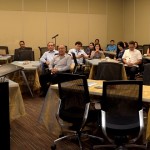By 2018, enterprise IT spending in Southeast Asia will total $62 billion, according to forecasts from Gartner, Inc. The Southeast Asia region comprises 11 countries of which Singapore, Malaysia, Indonesia and Thailand spend the most on IT and account for roughly 80 percent of IT spend in the region. Together, Indonesia, Malaysia, Singapore and Thailand will spend $52 billion on IT in 2015, with annual growth of six percent.
“Some might argue that given recent political, financial and climate challenges, Southeast Asia is a risky proposition,” said Venecia Liu, research vice president at Gartner. “However, Gartner believes that Southeast Asia’s economic development and growing consumer demand mean that its growth potential outweighs the risk. The growth of mobility and social media and the high percentage of younger people make this region suited to technology providers.”
Gartner estimates that enterprise spending on IT products and services in Singapore will be US$19.1 billion (SGD $24 billion) in 2015. Compared with other mature markets in the region, such as Australia, this intensity of IT spending is high relative to Singapore’s gross national output and population. The dominant sectors in 2015 will be communications, media and services, banking and securities, government and manufacturing. Together they will account for 70 percent of total enterprise IT spending in the country in 2015. The fastest-growing industry segments through 2018 will be banking and securities, utilities and manufacturing, and natural resources.
“Along with the Nordic region, Singapore routinely tops the lists of countries with innovative IT initiatives, efficient business practices, good levels of equality and other factors,” said Gartner research director Derry Finkeldey. “The government has transferred several of its services online and it has an open data initiative similar to the U.S. government, with nearly 9,000 datasets available in open format.”
Spending by enterprises in Malaysia is projected to be US$12.6 billion (MYR 40.6 billion) in 2015 at an annual growth rate of 6.4 percent across data centers, software, IT services, internal services, devices and telecom services.
“Nearly two decades of programs and initiatives have helped to turn Malaysia into the second-largest enterprise spender on IT in Southeast Asia,” said Ms. Liu. “The government’s vision is to encourage foreign investment through tax incentives and other benefits as well as to encourage local businesses through venture capital funding and more. This two-pronged approach has started to reap benefits in key sectors like healthcare and manufacturing.”












